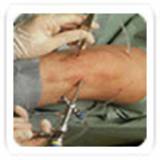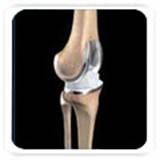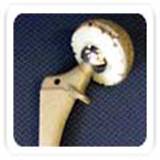- +91 9820036852
- sanjeev.jain@hiranandanihospital.org
- drsanjain@hotmail.com
Arthritis

Arthritis is a leading cause of disability among elderly men and women. The risk for disability from arthritis is as great as that from cardiovascular disease. A smooth, slippery, fibrous connective tissue called articular cartilage acts as a protective cushion between bones of a joint. Arthritis develops as the articular cartilage begins to deteriorate or is lost. As the articular cartilage is lost, the joint space between the bones narrows. This manifests as pain an early symptom. As the disease progresses, the cartilage thins out, become grooved and fragmented. The surrounding bones react by becoming thicker. They start to grow outward and form spurs. The synovium (a membrane, produces a thick fluid that helps to nourish the cartilage and keep it slippery) becomes inflamed and thickened. It may produce extra fluid, often known as "water on the knee," that causes additional swelling. Over a period of years, the joint slowly changes. In severe cases, when the articular cartilage is completely worn out, the thickened bone ends rub against each other. This results in a deformity of the joint. Normal activity becomes painful and difficult.
Types of Arthritis
Three basic types of arthritis may affect mainly knee and hip joint:- Osteoarthritis (OA) is the most common form of arthritis. OA is usually a slowly progressive degenerative disease. It most often affects middle-aged and older people.
- Rheumatoid arthritis (RA) is an inflammatory type of arthritis that can destroy the joint cartilage. RA can occur at any age. RA generally affects all the joints of the body.
- Post-traumatic arthritis can develop after an injury. This type of arthritis is similar to osteoarthritis and may develop years after a fracture, ligament injury or meniscus tear in the knee.
Symptoms of arthritis
The pain associated with arthritis develops gradually, although sudden onset is also possible. Affected joint may become stiff and swollen, with difficulty in bending or straightening. Pain and swelling are worse in the morning or after a period of inactivity. Pain may also increase after activities such as walking, stair climbing or kneeling. The pain may often cause a feeling of weakness in the joint especially in the knee, resulting in a "locking" or "buckling."
Diagnosis of arthritis
Clinical examination of patient and symptoms of the patient – pain, swelling, inability to perform activities, deformity and altered gait. I will get x-rays and blood tests depending on type of arthritis.
Treatment options
In its early stages, arthritis is treated with conservative, nonsurgical measures. Initial treatment is generally directed at pain management. OA pain may have different causes, depending on the individual and the stage of the disease. Thus, treatment is tailored to the individual.
- Lifestyle modifications can include losing weight, minimizing activities such as climbing stairs and sitting on the floor that aggravate the condition.
- Switching from running or jumping exercises to swimming or cycling, and modifying gym and sports activities.
- Exercises can help in increasing range of motion and flexibility as well as helps to strengthen the muscles around the joint.
- Using supportive devices such as a cane.
- Other measures may include applications of heat or ice, water exercises, liniments or elastic bandages. Several types of drugs can be used in treating arthritis as every patient is different, and not all people respond the same to medications:
- Anti-inflammatory medications can include aspirin, acetaminophen or ibuprofen to help reduce swelling in the joint.
- Glucosamine and chondroitin (kon-dro'-i-tin) sulfate are oral supplements may relieve the pain of osteoarthritis.
- Hyaluronate (hi-a-lou'-ron-ate) therapy consists of a series of injections designed to change the character of the joint fluid.
- Special medical treatments for RA include disease-modifying drugs.


Surgical Treatment
If arthritis does not respond to these non-operative treatments, you may need to have surgery:- Arthroscopic surgery uses fiber optic technology, which enables the surgeon to see inside the joint and clean it of debris or repair torn cartilage.
- An osteotomy cuts the shinbone (tibia) or the thighbone (femur) to improve the alignment of the knee or hip joint.
- A total joint replacement (knee / hip replacement) replaces the severely damaged joint cartilage with metal and plastic.


